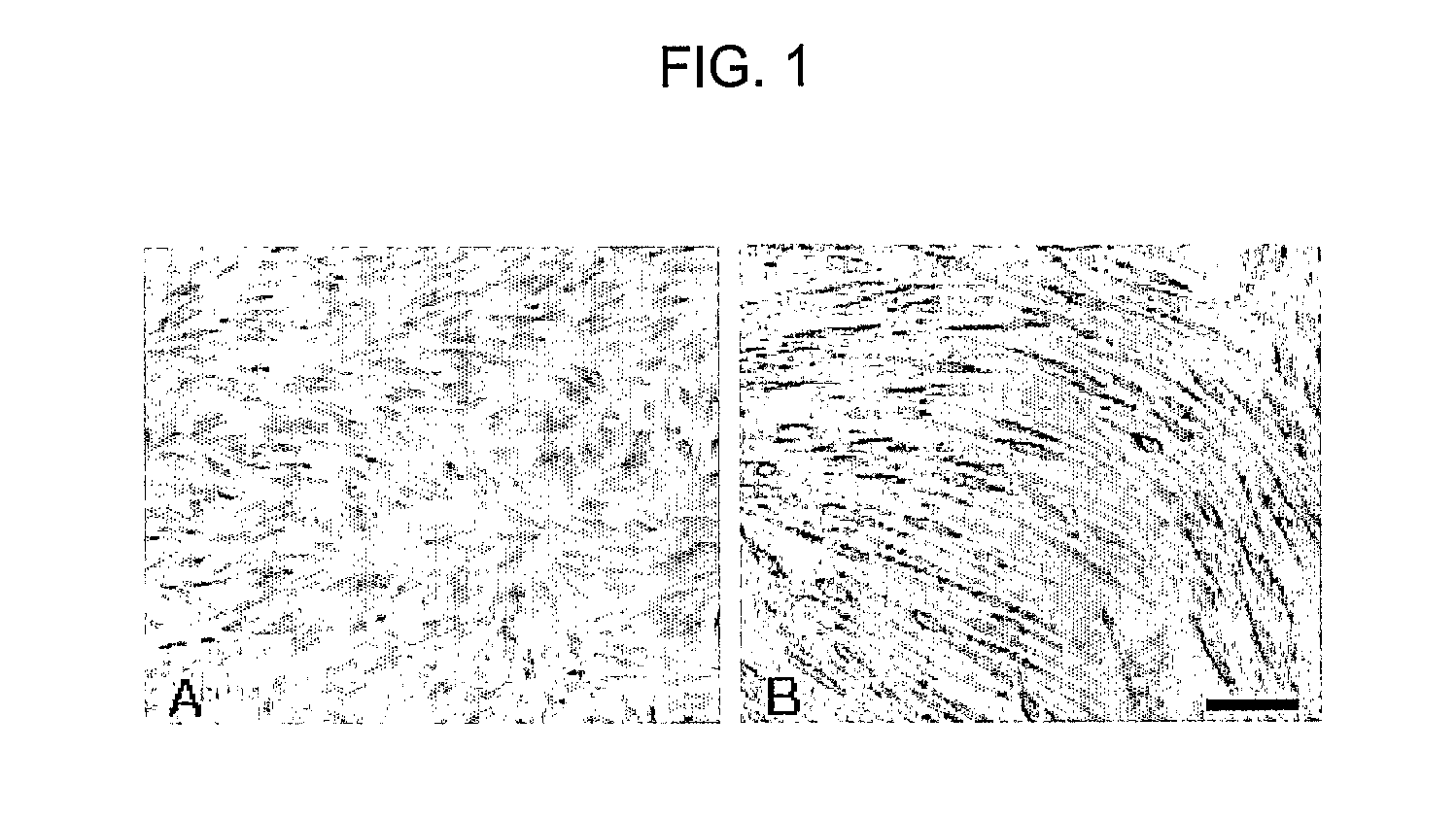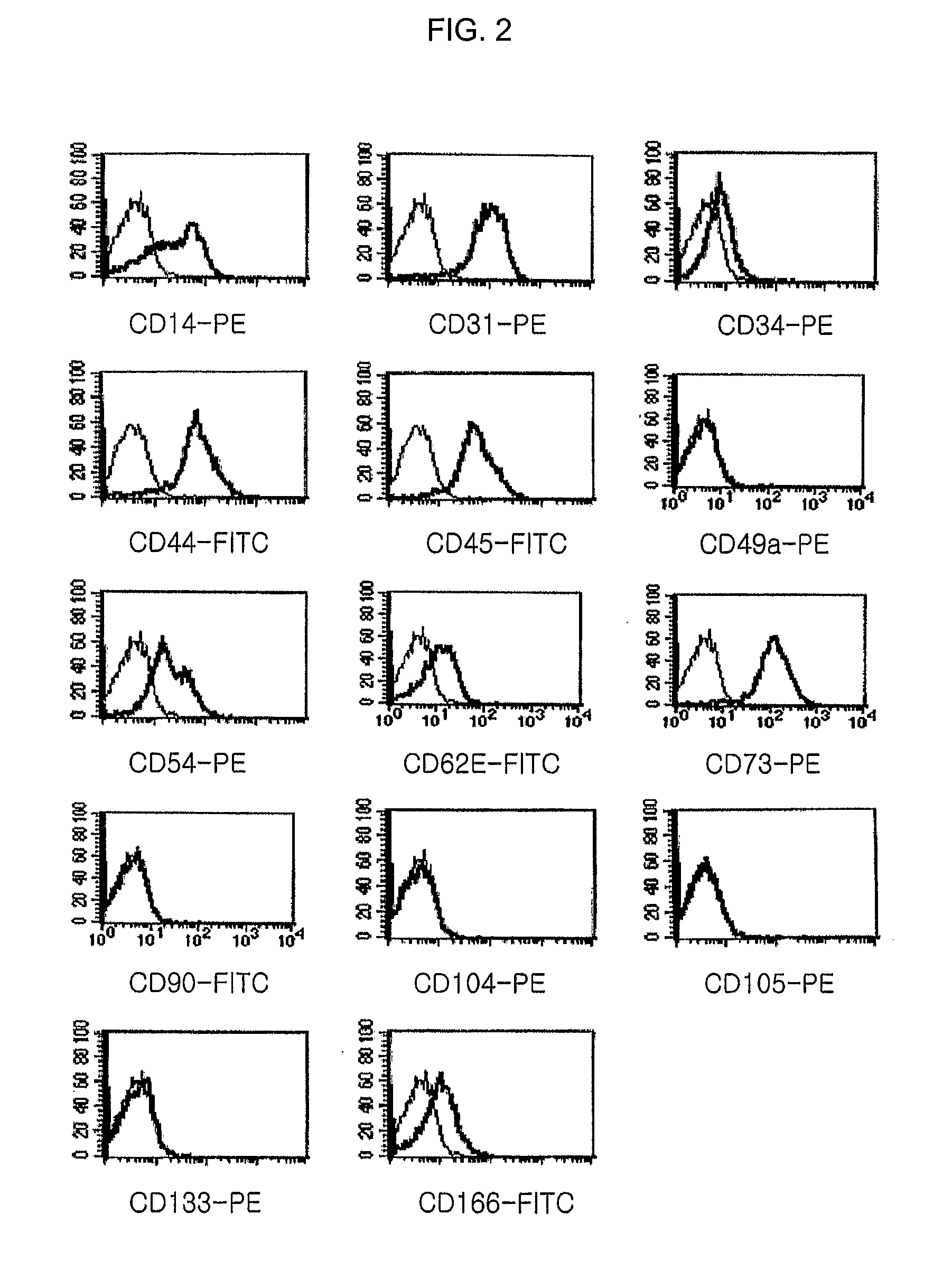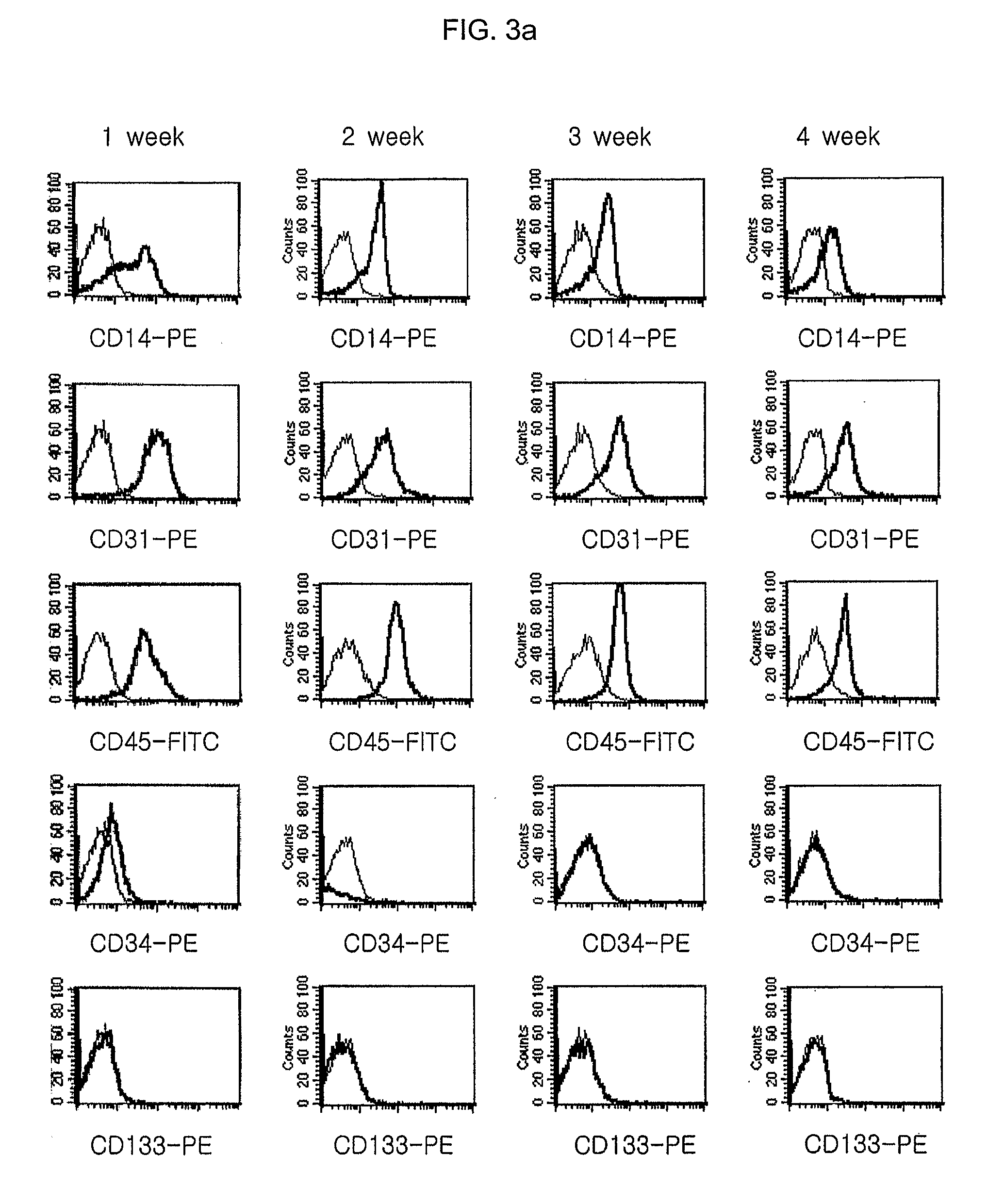Method for isolating and culturing multipotent progenitor/stem cells from umbilical cord blood and method for inducing differentiation thereof
a multi-potent stem cell and umbilical cord blood technology, applied in the field of isolating and culturing multi-potent stem cells from umbilical cord blood and inducing differentiation thereof, can solve the problems of many limitations in clinical applications, difficult to control the potency of differentiation, and ethical problems
- Summary
- Abstract
- Description
- Claims
- Application Information
AI Technical Summary
Benefits of technology
Problems solved by technology
Method used
Image
Examples
example 1
Isolation and Cultivation of Multipotent Progenitor / Stem Cells from Cord Blood-Derived Mononuclear Cells
Preparation of Cord Blood-Derived Mononuclear Cells
[0143] 60 to 150 ml of umbilical cord blood was taken from the umbilical cord vein using a cord blood sampling bag (volume: 175 ml) containing 23 ml of anticoagulant CPDA-1 or a 50 ml syringe containing 5 ml of heparin before the placenta was separated from the uterus after parturition. All instruments used for the cord blood sampling were subject to aseptic treatment before use, and the sampling site was sterilized by alcohol or betadin.
[0144] In order to isolate mononuclear cells from the cord blood, 15 ml of the cord blood sample was distributed to a 50 ml conical tube within 24 hrs after the sampling. 15 ml of phosphate buffered saline (Dulbecco's PBS; Hyclone, SH300028.03) was added to the tube and mixed with the cord blood. 15 ml of Ficoll-Hypaque solution (Sigma, H8887, density; 1.077 g / ml) was gently overlayed onto th...
example 2
Characterization of Multipotent Progenitor / Stem Cells Isolated and Cultured from Cord Blood-Derived Mononuclear Cells
[0150] For immunophenotyping the multipotent progenitor / stem cells prepared from the cord blood-derived mononuclear cells in Example 1, the cultured cells were treated with 0.05% trypsin solution to detach them from the culture flask, and the detached cells were washed twice with PBS. The cells were suspended in PBS at a concentration of 5×105 cells / 200 μl, 10 μl of each antibody was added thereto, and the flask was kept in a darkroom for 15 min. Then, the cells were washed twice with PBS for flow cytometry (Becton Dickinson), mixed with 500 μl of the same PBS, and subjected to immunophenotyping by a flow cytometry (FACScan, Becton Dickinson). At this time, PE- or FITC-conjugated CD14, CD31, CD34, CD44, CD45, CD49a, CD54, CD62E, CD73, CD90, CD104(stated above, BD Sciences), CD105(Ancell Co.), CD133(Miltenyi Biotec) and CD166(Ancell Co.) antibodies for FACS were empl...
example 3
Differentiation of Cord Blood-Derived Multipotent Progenitor / Stem Cells into Neurons
Induction of Differentiation into Neurons
[0155] In order to confirm whether the multipotent progenitor / stem cells obtained in Example 1 are capable of differentiating into various types of cells, they were subjected to induction of differentiation into neurons, as follows. The multipotent progenitor / stem cells were inoculated into an animal cell culture medium for inducing differentiation into neurons at a concentration of 4×104 cells / cm2, and cultured for 1 to 2 weeks, wherein the differentiation induction medium was HG-DMEM supplemented with 1% FBS, 2 mM L-glutamine, 10 μM retinoic acid, 10 μM folskolin, 100 ng / ml NGF, 1×N2 supplement (Gibco BRL), 0.00001% beta-mercaptoethanol and 100 U / ml penicillin-100 μg / ml streptomycin.
Confirmation of Differentiation into Neurons
[0156] As a result of observing with a light microscope whether the cord blood-derived multipotent progenitor / stem cells differ...
PUM
| Property | Measurement | Unit |
|---|---|---|
| time | aaaaa | aaaaa |
| doubling time | aaaaa | aaaaa |
| doubling time | aaaaa | aaaaa |
Abstract
Description
Claims
Application Information
 Login to View More
Login to View More - R&D
- Intellectual Property
- Life Sciences
- Materials
- Tech Scout
- Unparalleled Data Quality
- Higher Quality Content
- 60% Fewer Hallucinations
Browse by: Latest US Patents, China's latest patents, Technical Efficacy Thesaurus, Application Domain, Technology Topic, Popular Technical Reports.
© 2025 PatSnap. All rights reserved.Legal|Privacy policy|Modern Slavery Act Transparency Statement|Sitemap|About US| Contact US: help@patsnap.com



